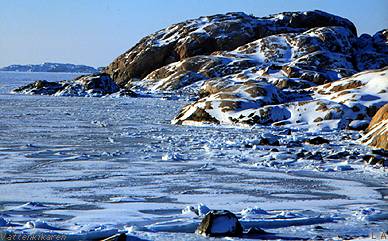 |
|
Living
conditions therefore vary on different levels along the cliffs. For those
organisms that try to exist under such conditions there are several factors
that are of importance:
The direct effect of the waves and the movement of objects
on the water surface can cause mechanical injury. The wearing of the ice
can for example tear away nearly all the bladder
wrack that is close to the surface in the Baltic.
Air is worse than water when resisting and evening out of
temperature fluctuations, while the winds can carry away damp air. This
can, at low tide, result in an increased risk for overheating, freezing
and dehydration.
At low tide when sea level decreases, the dryness results
in an increase in salinity,
while rain has the opposite effect. Furthermore, oxygen and carbon dioxide
concentrations, aswell as acidity vary greatly when there is very little
exchange of water.
Algae can find it difficult to photosynthesise when marooned
upon the beach. The further up the beach they live, the less time they
have to absorb water, carbon dioxide and different nutrients when submerged.

| The ice kills many beach organisms. |
 |
Page
18 of 52 |
 |
|



